Astounding Stories of Super-Science, October, 1930 Read online
Page 6
The Reader's Corner
_A Meeting Place for Readers of_
Astounding Stories
_The Reader's Corner_]
_The Invisible X-Flyers_
The following is a semi-technical description of the operation of the invisible X-flyers used in "Jetta of the Lowlands" as compiled by Philip Grant in the year 2021 from official records of the Anti-War Department of the United States of North America, and discovered recently by Ray Cummings.
The attainment of mechanical invisibility reached a state of perfection in the year 2000 sufficient to make it practical for many uses. For a century this result had been sought. It came, about the year 2000, not as a single startling discovery, but as the culmination of the patient labor of many men during many years. The popular mind has always considered that science advances by a series of "great scientific discoveries"; "unprecedented"; "revolutionary." That is not so. Each step in the progress of scientific achievement is built most carefully upon the one beneath it. And generally the "revolutionary, unprecedented discovery" has very little of itself that is new; rather it is a new combination of older, perhaps seemingly impractical knowledge. Every scientific theory, every device, is the offspring from a large and varied family tree of many scientific ancestors, each of whom in his day was a remarkable personage.
Thus it is, with the principles of mechanical invisibility. I deal here with the famous X-flyers. The operation of the plane itself is immaterial; its motors; its wing-spread surfaces; its aerial controls. I am concerned only with the scientific principles underlying its power of invisibility.
Three scientific factors are involved: First, the process known as de-electroniration; second, the theories of color absorption; third, the material, inevitable deflection (bending) of light rays when passing through a magnetic field.
I take each of the three in order. The forerunners of de-electroniration were the Martel effects--the experiments of Charles Martel, in Paris, in 1937. A new electric current, of a different character--now called the oscillating current as distinct from the alternating and direct--was developed. Metallic plates were electro-magnetized to produce an enveloping magnetic field of somewhat a different character from any field formerly known.
Dr. Norton Grenfell followed this in 1946 by using the Martel oscillating current to obtain a reverse effect. A similar disturbance of electrode balance. But not a surcharge. An exhaustion. An anti-electrical state, instead of a state of magnetism. A metallic mass so treated--and with a constant flow of oscillating current holding its subnormal electronic balance--was then said to be de-electronired.
Scientific "discoveries" are largely made by the trial and error system. The scientist takes what he finds. Generally he does not know, at first, what it means. Martell took his oscillating current and "discovered" the Martel Magnetic Levitation, whereby gravity was lessened, and then completely nullified. Grenfell, with his de-electroniration, increased the power of gravity. The two were combined by Grenfell and his associates--and the secret of interplanetary flight was at hand.
But there was a host of other workers not interested in space flyers; they probed in other directions. It was found that the subnormal magnetic field surrounding a metallic substance in a state of de-electroniration had two unusual properties: its color absorption was high; and it bent light rays from their normal straight path into a curve abnormally great. Yet, though it absorbed the color of the rays emanating from the de-electronired metal (the metal itself increasing this result), the magnetic field, while bending the rays passing through it from distant objects behind it, nevertheless left their color and all their inherent properties unchanged.
The principles of color absorption are these:--a pigment--a paint, a dye, if you will--is "red" because it absorbs from the light rays of the sun all the other colors and leaves only red to be reflected from it to the eye. Or "violet" because all the rest are absorbed, and the violet is reflected. Or "black" because all are absorbed; and "white" the reverse, all blended and reflected. Color is dependent upon vibratory motion. The solar spectrum--its range of visibility through the primary colors from red to violet--can be likened to a range of radio wave-lengths; vibration frequencies; and when we eliminate them all save the "violet"--that is what we have left, in the radio to hear, in color absorption to see.
Thus, a de-electronired metal was found to produce black. Not black as habitually we meet it--a "shiny" black, a "dull" black; but a true black--a real absence of light-ray reflection--a "nothingness to see"; in effect, an invisibility.
A word of explanation is necessary regarding the other property of the de-electronired field--the bending of distant light rays into a curve, yet leaving their spectrum unchanged. It was Albert Einstein who first made the statement--in the years following the turn of the century at 1900--that it was a normal, natural thing for a ray of light to be slightly deflected from its straight path when passing through a magnetic field. The claim caused world-wide interest, for upon its truth or falsity the whole fabric of the Einstein Theory of Relativity was woven.
An eclipse of the sun in the 1920's established that light is actually bent in the manner Einstein had calculated. A magnetic field surrounds the sun. In those days they did not know that it is a field of subnormal electronic balance--in effect, the result of de-electroniration. It was found, nevertheless, that stars close to the limb of the sun appeared, not in their true positions, but shifted in just the directions and with the amount of shift Einstein predicted. The light rays coming from them to the eye of the observer on Earth were curved in passing so close to the sun. But the color-bands of their spectrums were unaltered.
And some of the stars actually were behind the sun, yet because of the curved path of the light, were visible. I mention this because it is an important aspect of the subject of mechanical invisibility.
With the foregoing factors, the secret of mechanical invisibility is constructed. Gracely, an American--following a long series of world-wide experiments, tests of current strength, frequencies of oscillation, suitable metals, etc., which I cannot detail here--in 1955 was the final developer of the mechanisms subsequently used in the X-flyers.
Gracely produced what he christened "aluminoid-spectrite"--a light-weight alloy which, when carrying an oscillating electronic current of the proper frequency, produced the effects I have described. It absorbed from the light rays coming from the metal, all the colors of the solar spectrum, well beyond the range of the human eye at both ends of the scale. The result was a "visible nothingness."
A moment's thought will make clear that term. A visible nothingness is not invisibility. The fact that something was there but could not be seen was obvious. A black hat with a light on it and placed against an average background is almost as easy to see as a white hat. Gracely's first crude experiments were made with an aluminoid-spectrite cube--a small brick a foot in each dimension. The cube glowed, turned, dark, then black, then was gone. He had it resting on a white table, with a white background. And the fact that the cube was still there, was perfectly obvious. It was as though a hole of nothingness were set against the white table. It outlined the cube; reconstructed it so that for practical purposes the eye saw not a white, aluminoid brick, but a dead black one.
And this is very much what a man sees when he stares at his black hat on a table. The hat occults its background, and thus reconstructs itself.
But when Gracely determined the proper vibrations of his
oscillating current to coincide with all the other material factors he was using, the final result was before him-real invisibility. He used a patterned background--a symmetrically checkered surface, most difficult of all. The light rays coming from this background passed through the magnetic field surrounding the invisible colorless cube, and were bent into a curved path. But their own color-spectrum--in actuality the color, shape, all the visible characteristics of the background--was not greatly altered. The observer saw what actually was behind the invisible cube: the checkered background, sometimes slightly distorted, but nevertheless sufficiently clear for its abnormality to escape notice. Thus the cube's outlines were not reconstructed; and, in effect, it had vanished.
In practical workings with the X-flyers, no such difficult test as Gracely's cube and rectangular, symmetrically patterned background is ever met. The varying background behind a plane--at rest or flying, and particularly at night--demands less perfection of background than Gracely's laboratory conditions. I am informed that an X-flyer can vaguely be seen--or sensed, rather--from some angles and under certain and unfavorable conditions of light, and depending on its line of movement relative to the angle of observation, and the type and color-lighting of its background. But under most conditions it represents a very nearly perfect mechanical invisibility.
There is one aspect of the subject with which I may close this brief paper. I give it without technical explanation; it seems to me an amusing angle.
The theory of stereoscopics--the vision of the twin lenses of the human eyes, set a distance apart to give the perception of depth, of the third dimension--is in itself a subject tremendously interesting, and worthy of anyone's study. I have no space for it here, nor would it be strictly relevant. I need only state that a two-eyed man sees partially around an object (by virtue of the different angles from which each of his eyes gaze at it) and thus sees a trifle more of the background than would otherwise be the case. And this--these two viewpoints blended in his brain--gives him his perception of "depth," of "solidity"--the difference between a real scene of three dimensions and a painted scene on a canvas of two dimensions with only the artist's skill in perspective to simulate the third.
And I cannot refrain from mentioning that in Government tests of the Anti-War Department to determine the perfection of the invisibility of the X-flyers, it was a one-eyed man who proved that they were not always totally invisible!--Ray Cummings.
_Thank You_
Dear Editor:
I just want you to know this: I am a reader of your truly named Astounding Stories. I really enjoyed reading the "Spawn of the Stars," also "Brigands of the Moon," and I am very glad to hear that we are going to have another of Charles W. Diffin's stories in the next issue--"The Moon Master."--J. R. Penner, 376 Woodlawn Ave, Buffalo N. Y.
_"A Wiz"_
Dear Editor:
I am only a young girl sixteen years of age but am greatly interested in science. I have no master mind by any means, but have worked out many a difficult problem in school for my science prof.
Your magazine is a wiz. I haven't missed an instalment since it started. Give us more stories like "Monsters of Moyen," and "The Beetle Horde."--Josephine Frankhouser, 4949 Chestnut St., Philadelphia, Pennsylvania.
_"Pretty Good"_
Dear Editor:
I received Astounding Stories for May and it is pretty good. The next issue is number six, and I hope it is better than the previous ones. There have been some stories that do not belong in a Science Fiction magazine, such as: "The Cave of Horror," "The Corpse on the Grating," "The Soul Master," and "The Man who was Dead." There is also another story that was printed in the May issue that, so far as I think, does not belong in this magazine: that is, "Murder Madness."
Even all the other stories seem to be fantastic. Weird. Why not try to publish something on the H. G. Wells, E. R. Burroughs type of stories, also Ray Cummings' "The Man who Mastered Time," or "The Time Machine," by Wells?--Louis Wentzler, 1933 Woodbine St., Brooklyn, N. Y.
_From Ye Reader_
Dear Ye Ed.:
That sounds rather medieval a little for the editor of so novel a magazine, but nevertheless let's forget that and talk about some astounding stories.
First, I would suggest that you eliminate all stories of interplanetary travel (I would be different), as there are already several magazines on the market which deal almost exclusively with such stories. Now, tales like "The Beetle Horde," and those written by Murray Leinster, and those concerning that Sherlock Holmes, Dr. Bird, and those about the deep sea, like "Into the Ocean's Depths,"--such stories are astounding, and good. And once in a while let's have a humorous story. You know: "A bit of humor now and then--"
Well, anyhow, publish any kind of astounding story, just so it is different and does not deal with interplanetary travel.
Now, about the magazine. I think it is a good publication and I like it werra, werra mooch. I bought it on impulse and happened to be lucky enough to get the first issue, and nary an issue have I missed since. Although I possess an abject horror of any kind of insect, I enjoyed "The Beetle Horde" to the fullest extent. But here's hoping nothing like that will really happen.
Another thing I'd like to state is this: Some reader made a remark about not publishing any of Verne's works. I say you should. Why should any such great author be disregarded in so good a magazine? And is it not interesting to note that some of his stories have become actual realizations? Even Poe's should be published. All those dead authors whose stories would be considered good were they living. Why should any person ask not to have such good stories in your magazine? Perhaps there are some people who would enjoy them, but do not have the means nor time to buy these great works in book form. Think it over, ye Ed., think it over.
And now, to finish up, I'll say: are there any readers like me--a girl--or do only men and boys read Astounding Stories?--Gertrude Hemken, 5730 So. Ashland Ave., Chicago, Ill.
_Short--and Sweet_
Dear Editor:
Congratulations! Have followed up every issue of Astounding Stories and have found them the best yet. I have one fault to find and that is you do not publish Astounding Stories often enough. Thirty days is too far between.--Bernard Bauer, 235 Holland St., Syracuse, N. Y.
_Yes Sir!_
Dear Editor:
I read Astounding Stories all the time, although I'm just a boy. I think they're O. K. They give me a great "kick."
I think "The Moon Master" was the best story I ever read. Please ask Mr. Diffin to write more like it.
But then all the stories are really peppy.--Jack Hudson, St. Mark's School, Southborough, Massachusetts.
_"Undoubtedly the Best"_
Dear Editor:
Your magazine is undoubtedly the best Science Fiction "mag" on the stands. Why? Because of your authors. There is not another Science Fiction book on the stands that has stories by Victor Rousseau, Murray Leinster Ray Cummings, A. T. Locke, A. J. Burks, C. W. Diffin, S. W. Ellis and many others.
Some of your readers want stories by Dr. David H. Keller, Ed Earl Repp and Walter Kately. Well, I just wanted to tell you that I have stopped reading all other Science Fiction "mags" on account of the frequency of these authors in them. So please, please, don't destroy my last stronghold.
Also, I would not be against reprints. There is only one so far who has objected to reprints, while there have been several asking you to reprint A. Merritt's "People of the Pit." It
would not only satisfy your present readers, but, because of the great popularity of A. Merritt among the reading circles of to-day, it would gain for you many more readers.
Harl Vincent is an indispensable acquisition to "our" magazine. His stories are not only all excellent but his stories all contain good science. He will bring you many new readers.
May I add my voice to every other reader's in the cry for the reprinting of "People of the Pit," by A. Merritt? Why not give us some stories by him? He's pretty near the best writer living to-day.
I don't care for the Mars stories by Burroughs. He's too much long sword and short sword. A Merritt, however, is the man for you to get and keep.
The schedule for July looks "doggone good" and suggestive to the imagination. You might increase the contents of the book.
The only thing wrong with the stories is that you have too many repetitions. Please get A. Merritt. If you publish stories by him you will see a very noticeable increase in your subscription column. Another author who would repeat A. Merritt's action on your subscription column is Dr. Edward Elmer Smith. Please see about these authors.--Gabriel Kirschner, Box 301, Temple, Texas.
_From Young Miss Nightingale_
Dear Editor:
I have been wanting to write to you for a long time but only now am I able to do so. When I first got a copy of your magazine I just grabbed it and started reading it. That magazine had the first installment of "Brigands of the Moon" in it. Now, after one magazine has been read I nearly burst until the next one comes.
As for the writers, I like Ray Cummings, Harl Vincent, Sewell Peaslee Wright, and Murray Leinster best. I like interplanetary stories best. I also like stories of the Fourth Dimension and those of ancient races of people living in uninhabited parts of the earth. So far I have liked especially well "The Ray of Madness," "Cold Light," "From the Ocean Depths" and its sequel "Into the Ocean's Depths," "Brigands of the Moon," and "Murder Madness." Of course, I like the others too. I am only a mere girl (that accounts for this poor typewriting)--only ten years old--but I know my likes and dislikes.--Ellen Laura Nightingale, 223 So. Main St., Fairmont, Minn.
_Yessir--H. W. Wessolowski_
Dear Editor:
I have just finished the June issue of Astounding Stories. It contained some very interesting stories, such as "Brigands of the Moon," by Ray Cummings, "The Moon Master," by Charles W. Diffin, "Murder Madness," by Murray Leinster, and "Giants of the Ray," by Tom Curry. Although "Out of the Dreadful Depths," by C. D. Willard, was a good story, it does not belong in a Science Fiction magazine.
One of the best improvements you could make on Astounding Stories right now is to cut all edges smooth. I would like to see at least one full page picture with each story.
Wesso is the only good artist you have. Is Wessolowski his real name?--Jack Darrow, 4225 N. Spaulding Avenue, Chicago, Illinois.
Anent Reincarnation.
Dear Editor:
In the July issue of Astounding Stories, a correspondent, Worth K. Bryant, asks some thought-provoking questions about the fascinating subject of reincarnation. Although I have written to Mr. Bryant personally, I would like to present my views on the subject to all your readers.
Mr. Bryant asks: "Could a person remember his own death in a former reincarnation?" Yes, he could--if he could "tune in" on his higher consciousness, or ego. Were that possible, he could see all his past lives from beginning to end. It is only the physical self that dies; the ego, or true self, is immortal and remembers everything that it has experienced in previous incarnations on the physical plane. But since consciousness on this plane is expressed through the material brain, most human beings are unable to recall their former visits to this world; and it is perhaps better so. If there were not loss of memory our minds would now range over the adventures of thousands of years in the past. It would encompass a vast drama with countless loves and hates, of many lives filled with pathos and tragedy. Thus to distract the mind from the present life would retard our progress. There will come a time in human evolution when the average person will be able to recall his past incarnations, and then there will be no need or argument that we have lived here before, because everyone will remember it.
For those who care to pursue this subject more fully, I recommend "Elementary Theosophy," by L. W. Rogers, obtainable at most public libraries.--Allen Glasser, 1610 University Ave., New York, N. Y.
_Prefers the Longer Stories_
Dear Editor:
I've been reading your excellent periodical since the first issue, and I feel that I'm entitled to an opportunity to give expression to my reactions to the various issues. Of course, as a whole, the magazines were uniformly good every month, but some of the stories, naturally, were better than others.
In the January issue the best story was "The Beetle Horde" by Victor Rousseau. I expected a lot from this writer, having read his "Draft of Eternity," "The Eye of Balamok" and "The Messiah of the Cylinder." I wasn't disappointed.
The best story in the February issue was "Spawn of the Stars," by Charles Willard Diffin. Diffin is a newcomer as far as I know, but he certainly can write.
"Vandals of the Stars" took the honors in the March issue. A. T. Locke has written some good adventure shorts, but this was his first fantastic story, to the best of my knowledge. Come again, Locke! "Brigands of the Moon," by Ray Cummings was great too.
The best for April was "Monsters of Moyen," by Arthur J. Burks. Clever idea.
Victor Rousseau rang the bell again in the May issue with "The Atom Smasher." Let's have other stories of time-travel--some into the very remote past. Cave man stuff, you know!
"The Moon Master," by Charles Willard Diffin was the best for June. Diffin is one of your best writers.
In the last (July) issue, "The Forgotten Planet," by Sewell Peaslee Wright, I think, takes first place, though hard-pressed by "Earth, the Marauder" and "The Power and the Glory."
Now for a few suggestions. In the first place, let's have less short stories, and more longer ones. In my choice of stories for each issue, with one exception, I picked the novelettes. My reason for so doing is the fact that the authors apparently are not able to do justice to their themes in the shorter lengths. Of course, there are exceptions, like Diffin's "The Power and the Glory."
My second suggestion in this: Why not have a fixed position for your announcement of the stories for the next issue? The last page, for example. This would be more convenient for the readers; besides, those of us who have "our mags" bound into volumes could then cut out the announcement.
Finally, my third suggestion--and the real reason for my writing this letter. Don't you think it would be a good idea to publish in each issue the picture of one of the authors, and a short synopsis of his life? How he started writing, his experiences, etc. I'm certain that I'm not the only reader who's interested in the authors. I hope, if everything else I've said is ignored, you'll at least give the last suggestion serious consideration.
Why not get the opinion of other readers?
Continued and increasing success to Astounding Stories, best of the Science Fiction magazines!--P. A. Lyter, 220 Peffer Street, Harrisburg, Pa.
_Mr. Bates Accepts with Pleasure_
Dear Editor:
It is with greatest pleasure I note the addition of Miss Lilith Lorraine to your staff, and her initial effort in your publication. "The Jovian Jest" is but a glimpse of what is to come. The stories which she has writ
ten heretofore have been real gems of Science Fiction. May I again congratulate you.
The Science Correspondence Club takes great pleasure in announcing the enrollment of Capt. S. P. Meek and R. F. Starzl as members. These authors are well-known to Astounding Stories readers. Also, we take pleasure in announcing that we have asked Mr. Bates to become an honorary member in recognition of his fine work in furthering Science Fiction.
Our first bulletin has been issued and real progress is started. For those interested, Mr. Raymond A. Palmer at 1431--34th St., Milwaukee, Wisconsin, will handle all inquiries.
In closing, let me say that when a story pleases you readers, or the work of some author impresses you, write to the editor and tell him about it. In this way more and better Science Fiction will appear. Let us all give Astounding Stories a big hand, you readers! Best wishes of the Science Correspondence Club and--Walter L. Dennis, F. P. S., 4653 Addison St., Chicago, Illinois.
_"Bargain"_
Dear Editor:
I have just finished "The Atom Smasher," in your May issue of Astounding Stories, and liked it very much.
This is the first story that I have read in your magazine, although I have read other magazines for the past three years.
I see where you inquire as to the kind of stories your readers want.
Personally, I think stories of interplanetary travel are the best, and most demanded by readers of Science Fiction. Try and have one in each issue.
In my opinion, I see no criticisms to be made on your magazine. It certainly would be a bargain at several times the price you ask. I am sure I will continue reading it--Louis D. Buchanan, Jr., 711 Monroe Ave., Evansville, Indiana.
_No "Flash in the Pan"_
Dear Editor:
When I bought the first issue of Astounding Stories last December, I was impressed by its array of splendid stories and famous authors. I thought, then, that perhaps that first number was just a flash in the pan, and that succeeding issues would sink to the level of other Science Fiction magazines. Happily, I was wrong. Astounding Stories has more than fulfilled the promise of its initial issue. The stories are undoubtedly the finest of their kind, and written by the most prominent Science Fiction authors of the day. I cannot conceive of any possible improvement in the magazine.
I do wish, though, that you would not heed the gratuitous advice of certain earnest but misguided correspondents. For instance, in the June issue, one Warren Williams of Chicago, suggests that you enlarge the magazine and give each story a full-page illustration, like other Science Fiction periodicals. Mr. Williams evidently favors standardization. As one magazine is, so must the rest be. Please ignore this request, and others like it. Astounding Stories is different, unique; just keep it that way, and you will never lack a host of satisfied readers.
Before closing, I must voice my profound admiration for Murray Leinster's brilliant and engrossing story, "Murder Madness." It's the best serial you've printed so far; though I have high anticipation for Arthur J. Burks' latest novel, "Earth, the Marauder."--Mortimer Weisinger, 3550 Rochambeau Ave., Bronx, New York.
_"I Mean Increased"_
Dear Editor:
I wish to thank you for your reply to my letter. I did not expect you to give me a personal reply: that was why I asked you to reply to me in "The Readers' Corner." You are the only editor I have ever known of that goes to the trouble to giving personal replies to readers. Other magazines require a nominal fee. That's another score for you!
Your personal letter, as a girl would aptly say, "tickled me all over."
I am sorry I can't get a subscription just yet, but I am "bound" to my newsdealer a little while yet, as I immediately gave him a monthly order for Astounding Stories.
If you are the one who picked the authors, you have the best taste I have ever seen in one person. But couldn't your taste be improved? Pardon me, I mean increased. Namely, please add to your taste: H. P. Lovecraft and Robert E. Howard.
If you had different authors, in other words, new, inexperienced authors, I would object to your running more than one serial at a time, but with the marvelous old-timers I have no objections, for they can write long ones far better than they can the shorts. So keep them at work.
The three short stories, "Out of the Dreadful Depths," "The Cavern World" and "Giants of the Ray," were all very good. Ray Cummings was wonderful in the way he handled his "Brigands of the Moon." It was a "wow baby." "Murder Madness" is a great improvement over "Tanks." "Tanks" was the worst I've ever read by Leinster. But he came out of his reverie in "Murder Madness." It's great.
Sewell Peaslee Wright can work wonders with short stories. Keep his "typer" clicking. By the way, may I say a few good words for Sophie Wenzel Ellis? If she can duplicate "Creatures of the Light," maker her repeat.
Victor Rousseau's story, "The Beetle Horde," kept me "all het up" throughout. "The Atom Smasher" was excellent. I also greatly like stories of the mighty Atlantis.
I agree with others of your readers that you should not let Astounding Stories be printed in such a small size. Make it a little larger, and give us smoother paper, and you will prosper greatly.
"The Moon Master" was excellent.--Gabriel Kirschner, Box 301, Temple, Texas.
_"Could Kick Myself"_
Dear Editor:
I have just started reading Astounding Stories and could kick myself for not seeing it sooner. In your latest issue, "The Moon Master," by Charles Diffin, is great. He sure knows how to write adventure with science.
I am a member of the Science Corresponding Club and am glad to say it. In later years the club will be known just like other big clubs of to-day, "Nationally and Sciencelly."--John Marcroft, 32 Washington St., Central Falls, R. I.
_A Full List_
In the January number of Astounding Stories Cummings' "Phantom of Reality" was the best, followed by Rousseau's "Beetle Horde."
February: 1--Diffin's "Spawn of the Stars"; 2--Rousseau's "Beetle Horde"; 3--Ellis' "Creatures of the Light"; 4--Meek's "The Thief of Time."
March: 1--Cummings' "Brigands of the Moon"; 2--Locke's "Vandals of the Stars"; 3--Meek's "Cold Light."
April: 1--Cummings' "Brigands of the Moon"; 2--Burk's "Monsters of Moyen"; 3--Meek's "Ray of Madness"; 4--Pelcher's "Vampires of Venus."
May: 1--Cummings' "Brigands of the Moon"; 2--Leinster's "Murder Madness"; 3--Rousseau's "Atom Smasher."
June: 1--Cummings' "Brigands of the Moon"; 2--Leinster's "Murder Madness"; 3--Diffin's "Moon Master."
Please give us a story by H. P. Lovecraft, if you can get one.--Carl Ballard, 202 N. Main St., Danville, Va.
_"Words Cannot Express"_
Dear Editor:
I have read your wonderful magazine since it was first published, and words cannot express what a fine magazine I think it is. All my life, I have hoped that someone would publish a magazine just like Astounding Stories. A magazine just full to the brim with the right kind of stories; thrilling stories of super-science, well written in plain and convincing English by wide awake authors.
I thought that "The Cavern World" was a whiz of a story, and "The Moon Master" was so exciting that I sat up late at night reading it. Let's have more of that kind of science story, that thrills every red-blooded American.
I hope that you print your magazine on better paper.--David Bangs, 190 Marlboro St., Boston, Mass.
_Unconvinced_
Dear Editor:
I received the
latest issue of Astounding Stories, and in looking it through I noticed your comments on reprints. Your argument can easily be shot full of holes, and that's what I intend to do.
First: Those stories being printed now are far inferior to the reprints. Even your best stories, such as "Murder Madness" and "Brigands of the Moon," cannot be compared with such stories as "Station X," "The Moon Pool," "The Metal Monster," or "The Columbus of Space" and "The Second Deluge."
Second: The Saturday Evening Post cannot be compared with our magazine, for all the stories printed in it can be obtained in book form, while the scientific novels are almost all out of print.
Third: There is surely more than one out of a hundred who haven't read the reprints. Just because some have read them is no reason that they don't want them. I know, for I have a large library of reprints and have read, and own, almost every one of them, yet I would gladly see them again.
Fourth: The authors need not starve. You could easily devote just a small space for reprints, and many would pay twenty-five cents for the magazine.
The fairest and most American idea would be to let your readers vote for this. Here is vote No. 1 for reprints.--Woodrow Gelman, 1603 President St., Brooklyn, N. Y.
_Praise and Suggestions_
Dear Editor:
I have just finished the July issue of Astounding Stories and classify the stories as follows:
"Beyond the Heaviside Layer," good; "Earth, the Marauder," excellent, best in issue; "From an Amber Block," fairly good; "The Terror of Air-Level Six," very good; "The Forgotten Planet," excellent; "The Power and the Glory," good; "Murder Madness," very good, but not so much so as preceding chapters.
Now for a few criticisms:
1. Your magazine (or should I say "our" magazine?) is too small. Of course, it would be a radical change to make it larger, but, like others, I think in the end you would gain rather than lose by it. Most small magazines are cheap affairs, and to have Astounding Stories small brands it as a cheap type of magazine. Small magazines are more likely to be hidden on the newsstands by larger ones, and in most stores the large magazines have the more advantageous positions.
2. The edges of your pages are uneven. You look in the index and find an interesting story is on, for example, page 56. You skim the pages to find it, and from page 43 you find yourself suddenly at page 79. Make the paper more even, please.
3. Don't have advertisements before the stories. Have them in the rear.
4. Have a full page illustration facing the beginning of each story. If at the end of a story you find pages won't turn up right, continue the last page to the back of the book.
Wesso is excellent. Another good artist is Paul, who draws for another Science Fiction magazine. Your cover illustrations are fine.
Summary: Enlarge size of magazine, smooth edges of paper, have advertisements in rear of book, use full page illustrations.
If this is expensive, you could charge twenty-five cents instead of twenty cents, and I, for one, would be glad to pay the extra nickel as I do for other magazines of Science Fiction.--Robert Baldwin, 1427 Judson Ave., Evanston, Illinois.
_"The Readers' Corner"_
All Readers are extended a sincere and cordial invitation to "comeover to 'The Readers' Corner'" and join in our monthly discussion ofstories, authors, scientific principles and possibilities--everythingthat's of common interest in connection with our Astounding Stories.
Although from time to time the Editor may make a comment or so, thisis a department primarily for _Readers_, and we want you to make fulluse of it. Likes, dislikes, criticisms, explanations, roses,brickbats, suggestions--everything's welcome here: so "come over in'The Readers' Corner'" and discuss it with all of us!
_--The Editor._
* * * * *

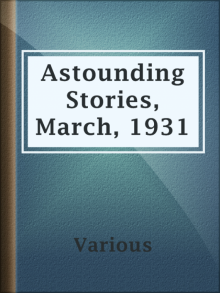 Astounding Stories, March, 1931
Astounding Stories, March, 1931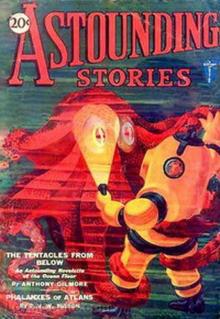 Astounding Stories, February, 1931
Astounding Stories, February, 1931 Futuria Fantasia, Spring 1940
Futuria Fantasia, Spring 1940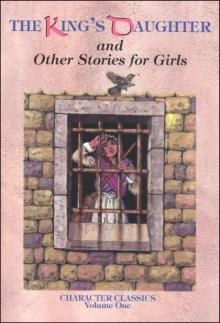 The King's Daughter and Other Stories for Girls
The King's Daughter and Other Stories for Girls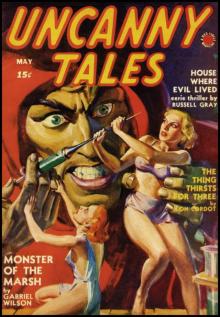 Uncanny Tales
Uncanny Tales Masters of Noir: Volume Two
Masters of Noir: Volume Two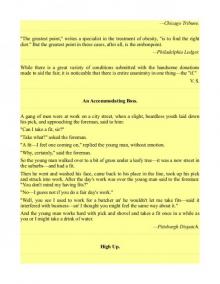 Witty Pieces by Witty People
Witty Pieces by Witty People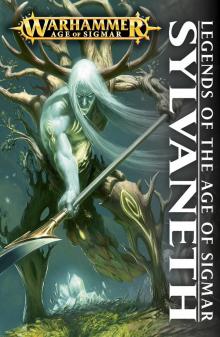 Sylvaneth
Sylvaneth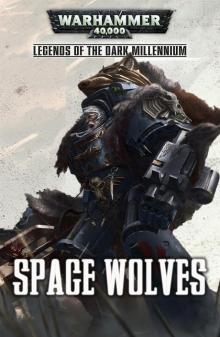 Space Wolves
Space Wolves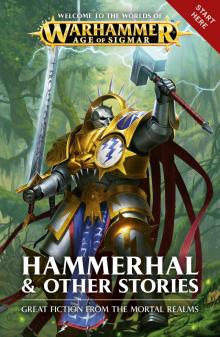 Hammerhal & Other Stories
Hammerhal & Other Stories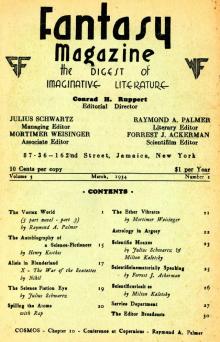 The Fantasy Fan, March, 1934
The Fantasy Fan, March, 1934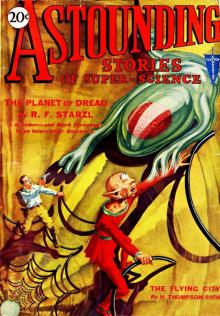 Astounding Stories of Super-Science, August 1930
Astounding Stories of Super-Science, August 1930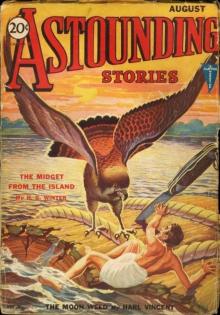 Astounding Stories, August, 1931
Astounding Stories, August, 1931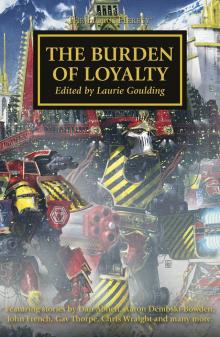 The Burden of Loyalty
The Burden of Loyalty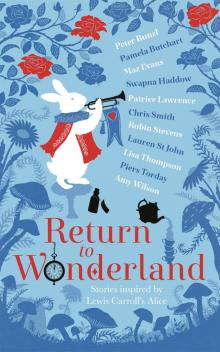 Return to Wonderland
Return to Wonderland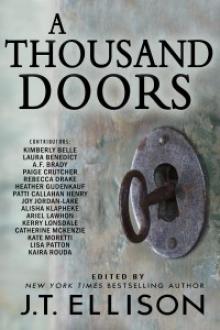 Anthology - A Thousand Doors
Anthology - A Thousand Doors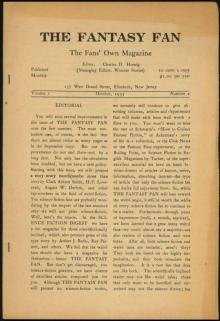 The Fantasy Fan, October 1933
The Fantasy Fan, October 1933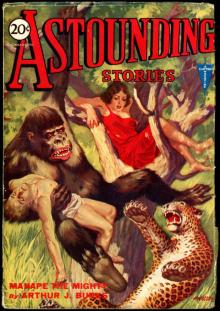 Astounding Stories, June, 1931
Astounding Stories, June, 1931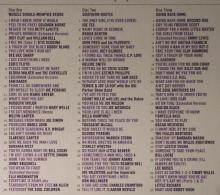 Southern Stories
Southern Stories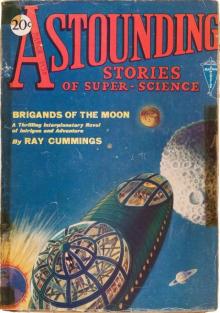 Astounding Stories of Super-Science, May, 1930
Astounding Stories of Super-Science, May, 1930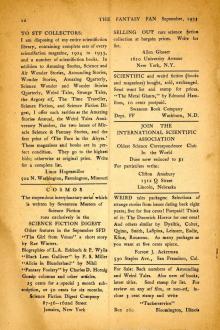 The Fantasy Fan December 1933
The Fantasy Fan December 1933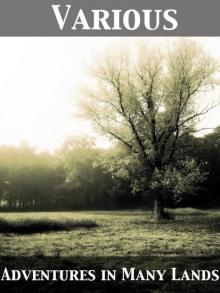 Adventures in Many Lands
Adventures in Many Lands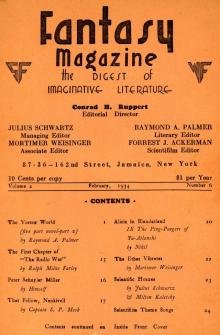 The Fantasy Fan February 1934
The Fantasy Fan February 1934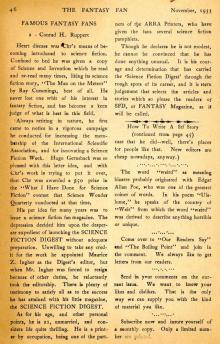 The Fantasy Fan November 1933
The Fantasy Fan November 1933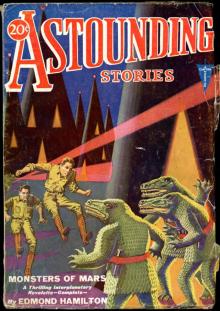 Astounding Stories, April, 1931
Astounding Stories, April, 1931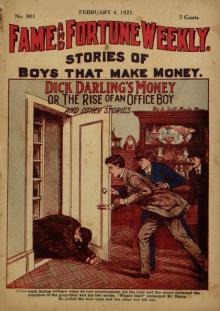 Fame and Fortune Weekly, No. 801, February 4, 1921
Fame and Fortune Weekly, No. 801, February 4, 1921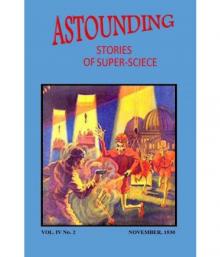 Astounding Stories of Super-Science, November, 1930
Astounding Stories of Super-Science, November, 1930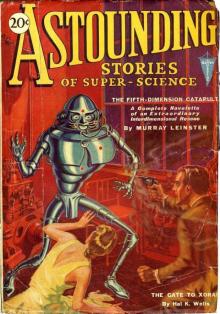 Astounding Stories of Super-Science January 1931
Astounding Stories of Super-Science January 1931 A Monk of Fife
A Monk of Fife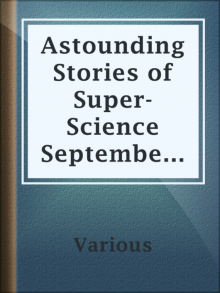 Astounding Stories of Super-Science September 1930
Astounding Stories of Super-Science September 1930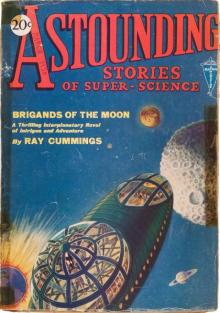 Astounding Stories of Super-Science July 1930
Astounding Stories of Super-Science July 1930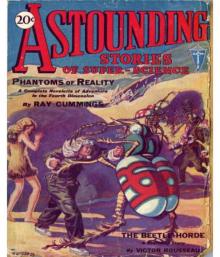 Astounding Stories of Super-Science, June, 1930
Astounding Stories of Super-Science, June, 1930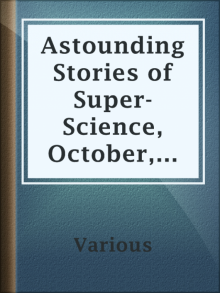 Astounding Stories of Super-Science, October, 1930
Astounding Stories of Super-Science, October, 1930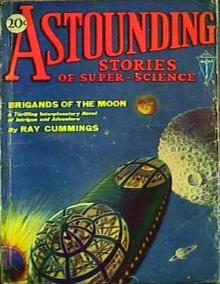 Astounding Stories of Super-Science, March 1930
Astounding Stories of Super-Science, March 1930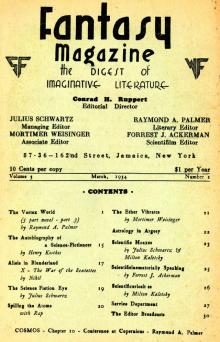 The Fantasy Fan January 1934
The Fantasy Fan January 1934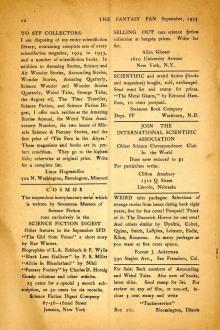 The Fantasy Fan September 1933
The Fantasy Fan September 1933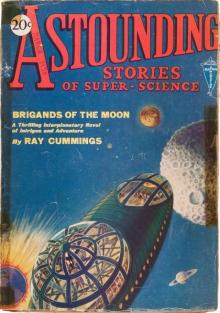 Astounding Stories of Super-Science February 1930
Astounding Stories of Super-Science February 1930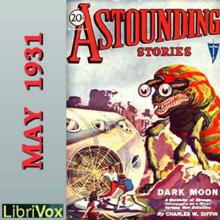 Astounding Stories, May, 1931
Astounding Stories, May, 1931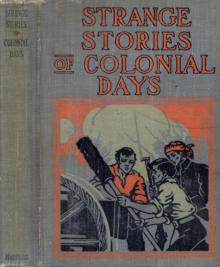 Strange Stories of Colonial Days
Strange Stories of Colonial Days Golden Age of Science Fiction Vol IX
Golden Age of Science Fiction Vol IX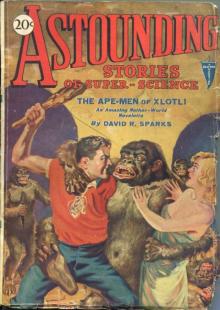 Astounding Stories of Super-Science, December 1930
Astounding Stories of Super-Science, December 1930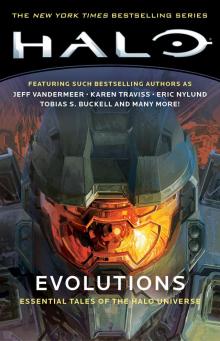 Evolutions: Essential Tales of the Halo Universe
Evolutions: Essential Tales of the Halo Universe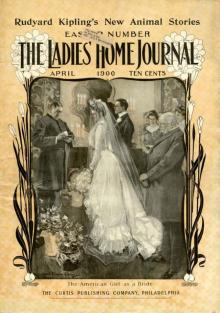 Good Stories Reprinted from the Ladies' Home Journal of Philadelphia
Good Stories Reprinted from the Ladies' Home Journal of Philadelphia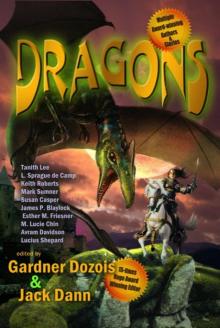 Dragons!
Dragons!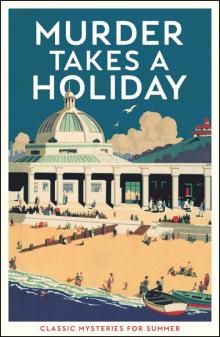 Murder Takes a Holiday
Murder Takes a Holiday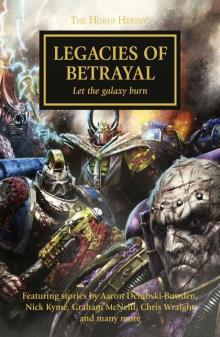 Legacies of Betrayal
Legacies of Betrayal STAR WARS: TALES FROM THE CLONE WARS
STAR WARS: TALES FROM THE CLONE WARS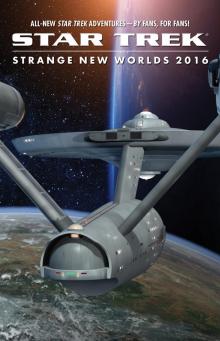 Strange New Worlds 2016
Strange New Worlds 2016 Lippincott's Magazine, August, 1885
Lippincott's Magazine, August, 1885 Golden Age of Science Fiction Vol X
Golden Age of Science Fiction Vol X Hot Stuff
Hot Stuff Santa Wore Spurs
Santa Wore Spurs Paranormal Erotica
Paranormal Erotica Tangled Hearts: A Menage Collection
Tangled Hearts: A Menage Collection Sweet Tea and Jesus Shoes
Sweet Tea and Jesus Shoes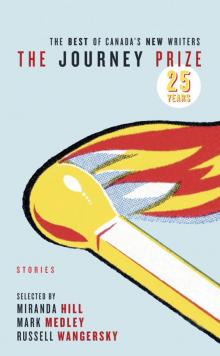 The Journey Prize Stories 25
The Journey Prize Stories 25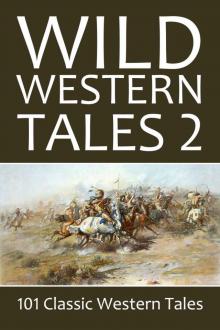 Wild Western Tales 2: 101 Classic Western Stories Vol. 2 (Civitas Library Classics)
Wild Western Tales 2: 101 Classic Western Stories Vol. 2 (Civitas Library Classics) (5/15) The Golden Age of Science Fiction Volume V: An Anthology of 50 Short Stories
(5/15) The Golden Age of Science Fiction Volume V: An Anthology of 50 Short Stories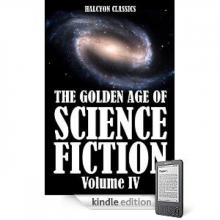 (4/15) The Golden Age of Science Fiction Volume IV: An Anthology of 50 Short Stories
(4/15) The Golden Age of Science Fiction Volume IV: An Anthology of 50 Short Stories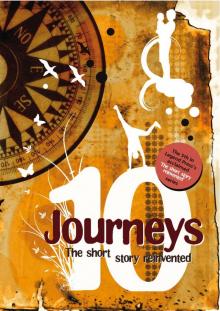 Ten Journeys
Ten Journeys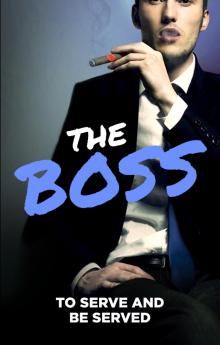 The Boss
The Boss The Penguin Book of French Poetry
The Penguin Book of French Poetry Golden Age of Science Fiction Vol VIII
Golden Age of Science Fiction Vol VIII His Cinderella Housekeeper 3-in-1
His Cinderella Housekeeper 3-in-1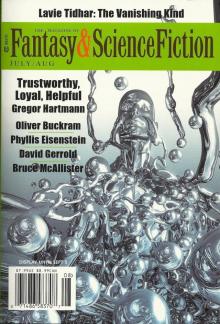 The Magazine of Fantasy & Science Fiction - July/August 2016
The Magazine of Fantasy & Science Fiction - July/August 2016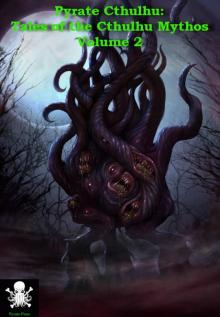 PYRATE CTHULHU - Tales of the Cthulhu Mythos (vol.2)
PYRATE CTHULHU - Tales of the Cthulhu Mythos (vol.2)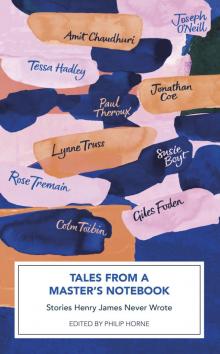 Tales from a Master's Notebook
Tales from a Master's Notebook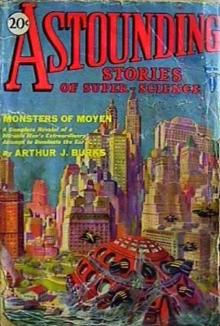 April 1930
April 1930 New Erotica 6
New Erotica 6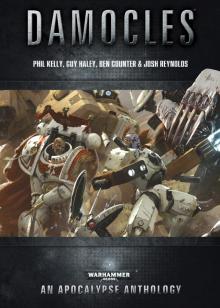 Damocles
Damocles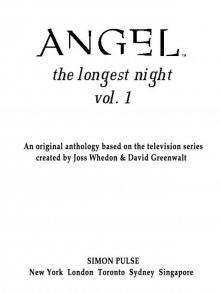 The Longest Night Vol. 1
The Longest Night Vol. 1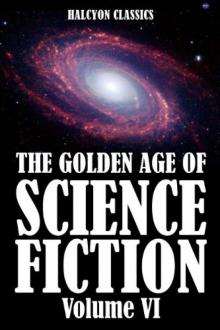 The Golden Age of Science Fiction Volume VI: An Anthology of 50 Short Stories
The Golden Age of Science Fiction Volume VI: An Anthology of 50 Short Stories (1/15) The Golden Age of Science Fiction: An Anthology of 50 Short Stories
(1/15) The Golden Age of Science Fiction: An Anthology of 50 Short Stories Eye of Terra
Eye of Terra ONCE UPON A REGENCY CHRISTMAS
ONCE UPON A REGENCY CHRISTMAS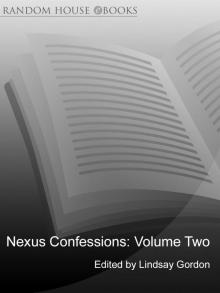 Nexus Confessions
Nexus Confessions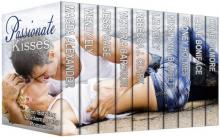 Passionate Kisses
Passionate Kisses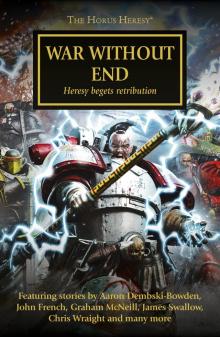 War Without End
War Without End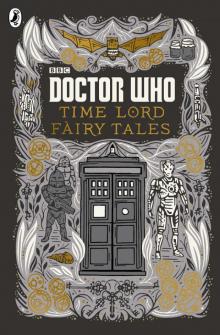 Doctor Who: Time Lord Fairy Tales
Doctor Who: Time Lord Fairy Tales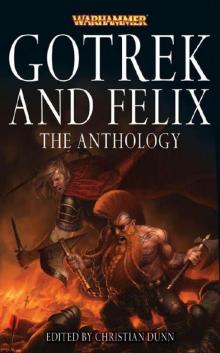 Gotrek and Felix: The Anthology
Gotrek and Felix: The Anthology WESTERN CHRISTMAS PROPOSALS
WESTERN CHRISTMAS PROPOSALS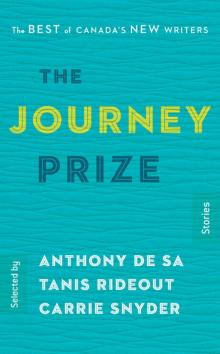 The Journey Prize Stories 27
The Journey Prize Stories 27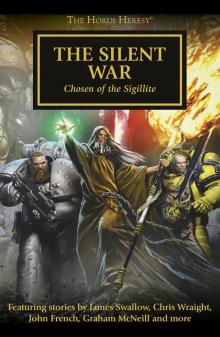 The Silent War
The Silent War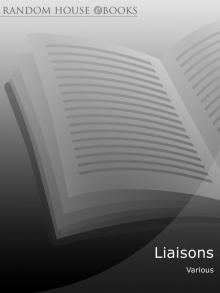 Liaisons
Liaisons Ellora's Cavemen: Tales from the Temple IV
Ellora's Cavemen: Tales from the Temple IV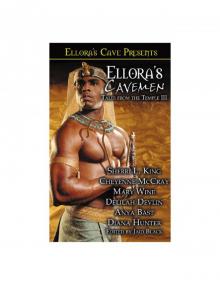 Ellora's Cavemen: Tales from the Temple II
Ellora's Cavemen: Tales from the Temple II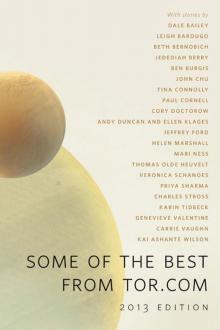 Some of the Best From Tor.com, 2013 Edition: A Tor.Com Original
Some of the Best From Tor.com, 2013 Edition: A Tor.Com Original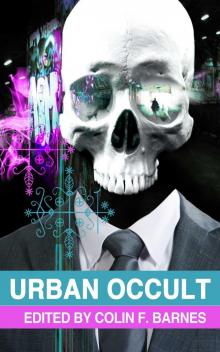 Urban Occult
Urban Occult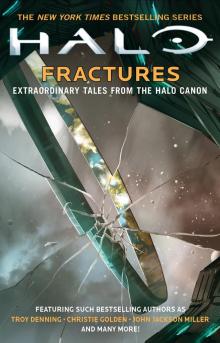 Fractures
Fractures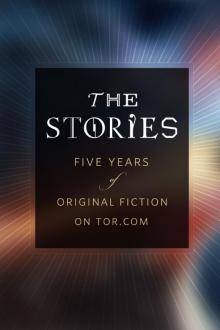 The Stories: Five Years of Original Fiction on Tor.com
The Stories: Five Years of Original Fiction on Tor.com The Penguin Book of Modern British Short Stories
The Penguin Book of Modern British Short Stories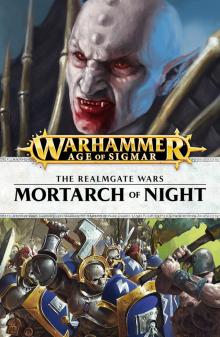 Mortarch of Night
Mortarch of Night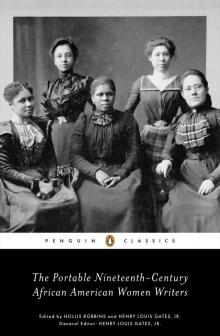 The Portable Nineteenth-Century African American Women Writers
The Portable Nineteenth-Century African American Women Writers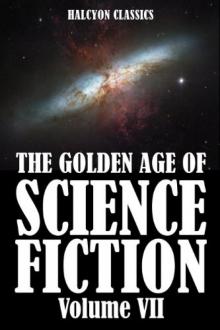 The Golden Age of Science Fiction Volume VII: An Anthology of 50 Short Stories
The Golden Age of Science Fiction Volume VII: An Anthology of 50 Short Stories Holy Bible: King James Version, The
Holy Bible: King James Version, The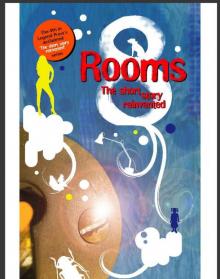 Eight Rooms
Eight Rooms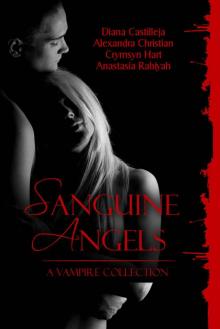 sanguineangels
sanguineangels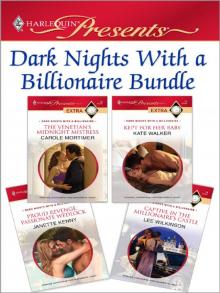 DarkNightsWithaBillionaireBundle
DarkNightsWithaBillionaireBundle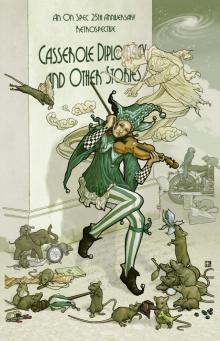 Casserole Diplomacy and Other Stories
Casserole Diplomacy and Other Stories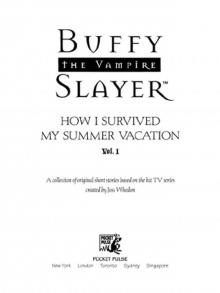 How I Survived My Summer Vacation
How I Survived My Summer Vacation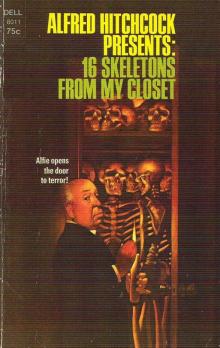 Alfred Hitchcock Presents: 16 Skeletons From My Closet
Alfred Hitchcock Presents: 16 Skeletons From My Closet Lords, Ladies, Butlers and Maids
Lords, Ladies, Butlers and Maids The B4 Leg
The B4 Leg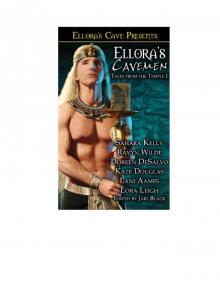 Ellora's Cavemen: Tales from the Temple I
Ellora's Cavemen: Tales from the Temple I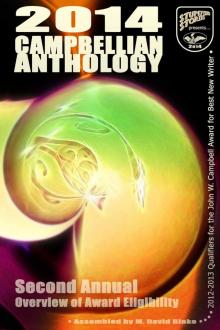 2014 Campbellian Anthology
2014 Campbellian Anthology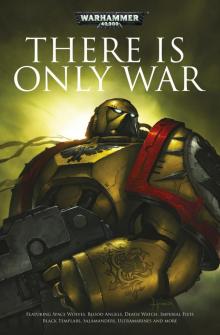 There Is Only War
There Is Only War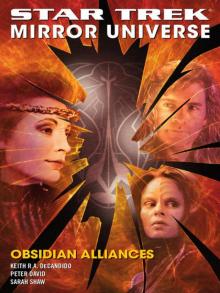 Obsidian Alliances
Obsidian Alliances 12 Gifts for Christmas
12 Gifts for Christmas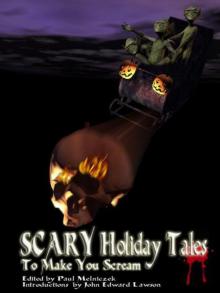 Scary Holiday Tales to Make You Scream
Scary Holiday Tales to Make You Scream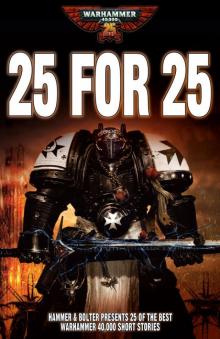 25 For 25
25 For 25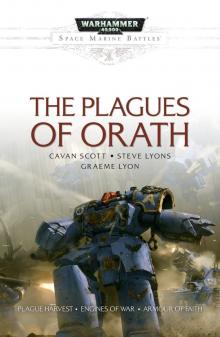 The Plagues of Orath
The Plagues of Orath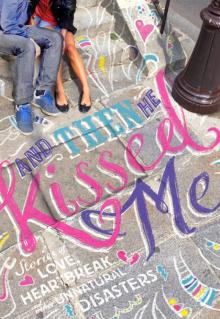 And Then He Kissed Me
And Then He Kissed Me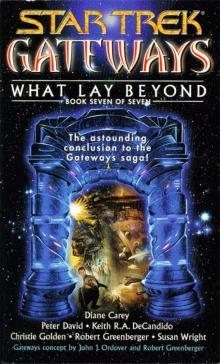 Star Trek - Gateways 7 - WHAT LAY BEYOND
Star Trek - Gateways 7 - WHAT LAY BEYOND Laugh Your Head Off Again and Again
Laugh Your Head Off Again and Again The Balfour Legacy
The Balfour Legacy Golden Age of Science Fiction Vol XI
Golden Age of Science Fiction Vol XI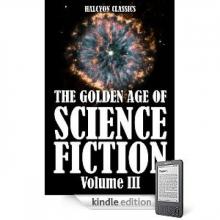 (3/15) The Golden Age of Science Fiction Volume III: An Anthology of 50 Short Stories
(3/15) The Golden Age of Science Fiction Volume III: An Anthology of 50 Short Stories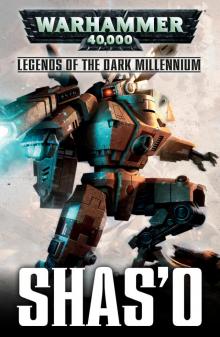 Shas'o
Shas'o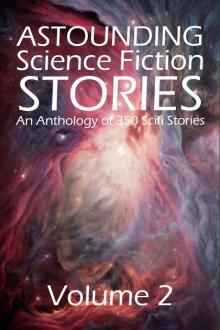 Astounding Science Fiction Stories: An Anthology of 350 Scifi Stories Volume 2 (Halcyon Classics)
Astounding Science Fiction Stories: An Anthology of 350 Scifi Stories Volume 2 (Halcyon Classics)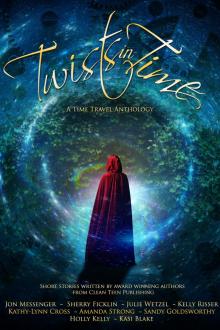 Twists in Time
Twists in Time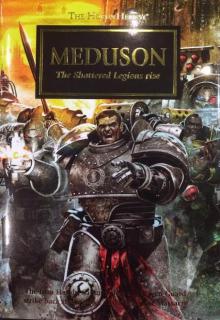 Meduson
Meduson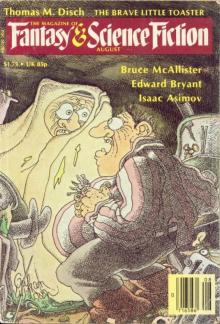 The Magazine of Fantasy & Science Fiction - August 1980
The Magazine of Fantasy & Science Fiction - August 1980 The Journey Prize Stories 22
The Journey Prize Stories 22 The Book that Made Me
The Book that Made Me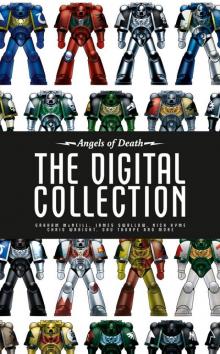 Angels of Death Anthology
Angels of Death Anthology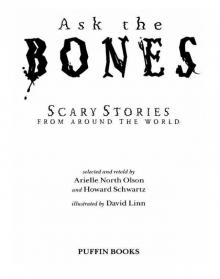 Ask the Bones
Ask the Bones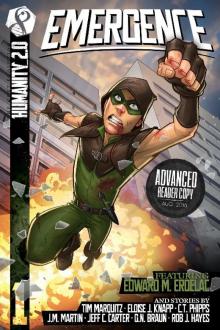 Emergence
Emergence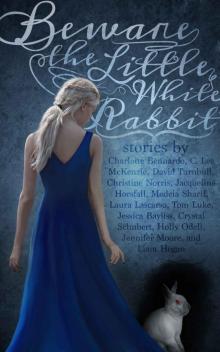 Beware the Little White Rabbit
Beware the Little White Rabbit Xcite Delights Book 1
Xcite Delights Book 1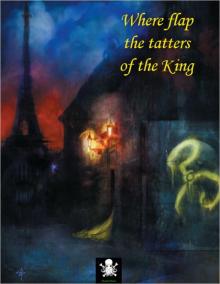 Where flap the tatters of the King
Where flap the tatters of the King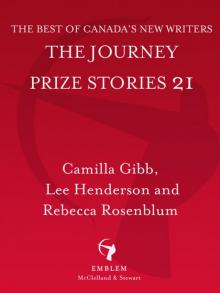 The Journey Prize Stories 21
The Journey Prize Stories 21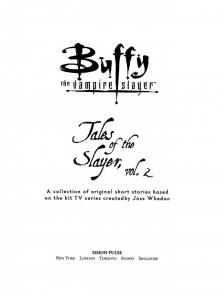 Tales of the Slayer, Volume II
Tales of the Slayer, Volume II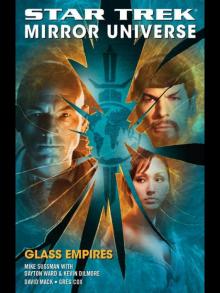 Glass Empires
Glass Empires Golden Age of Science Fiction Vol XII
Golden Age of Science Fiction Vol XII (2/15) The Golden Age of Science Fiction Volume II: An Anthology of 50 Short Stories
(2/15) The Golden Age of Science Fiction Volume II: An Anthology of 50 Short Stories Fairytale Collection
Fairytale Collection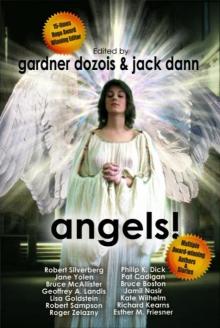 Angels!
Angels! Golden Age of Science Fiction Vol XIII
Golden Age of Science Fiction Vol XIII